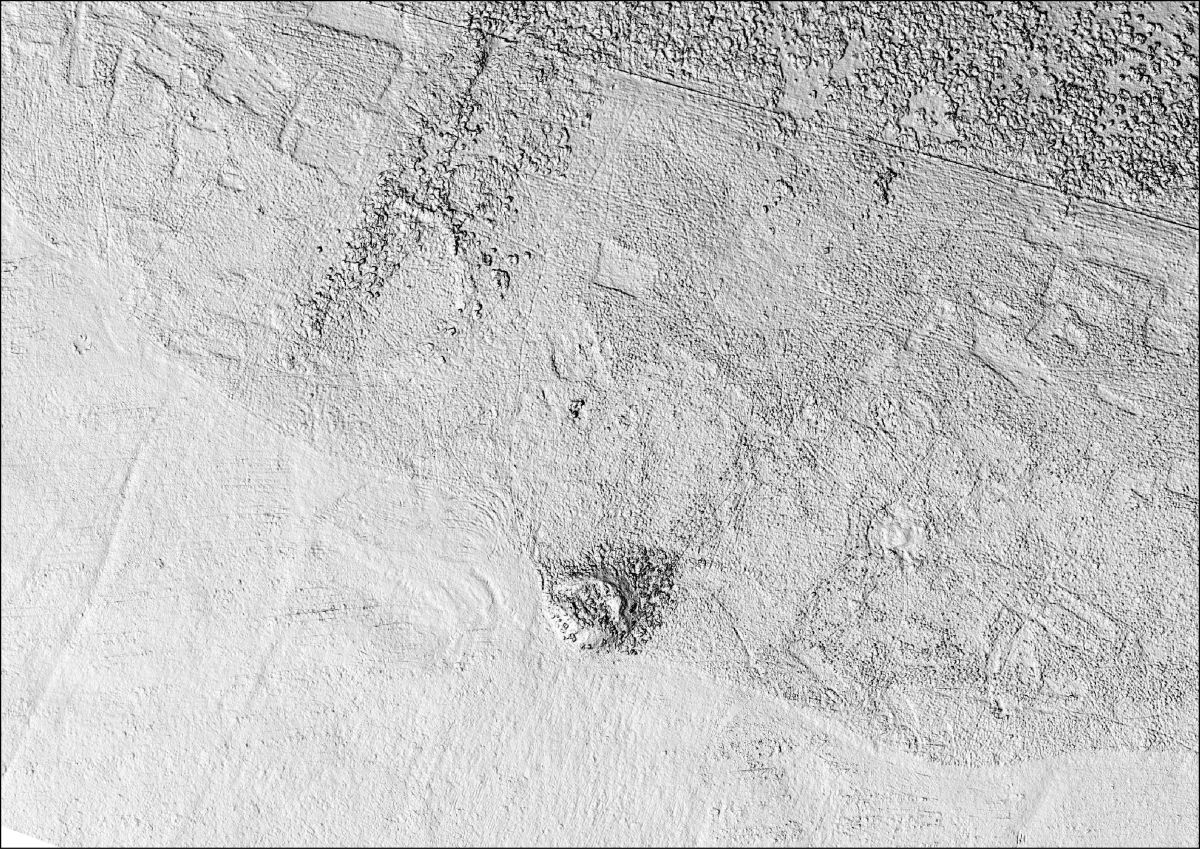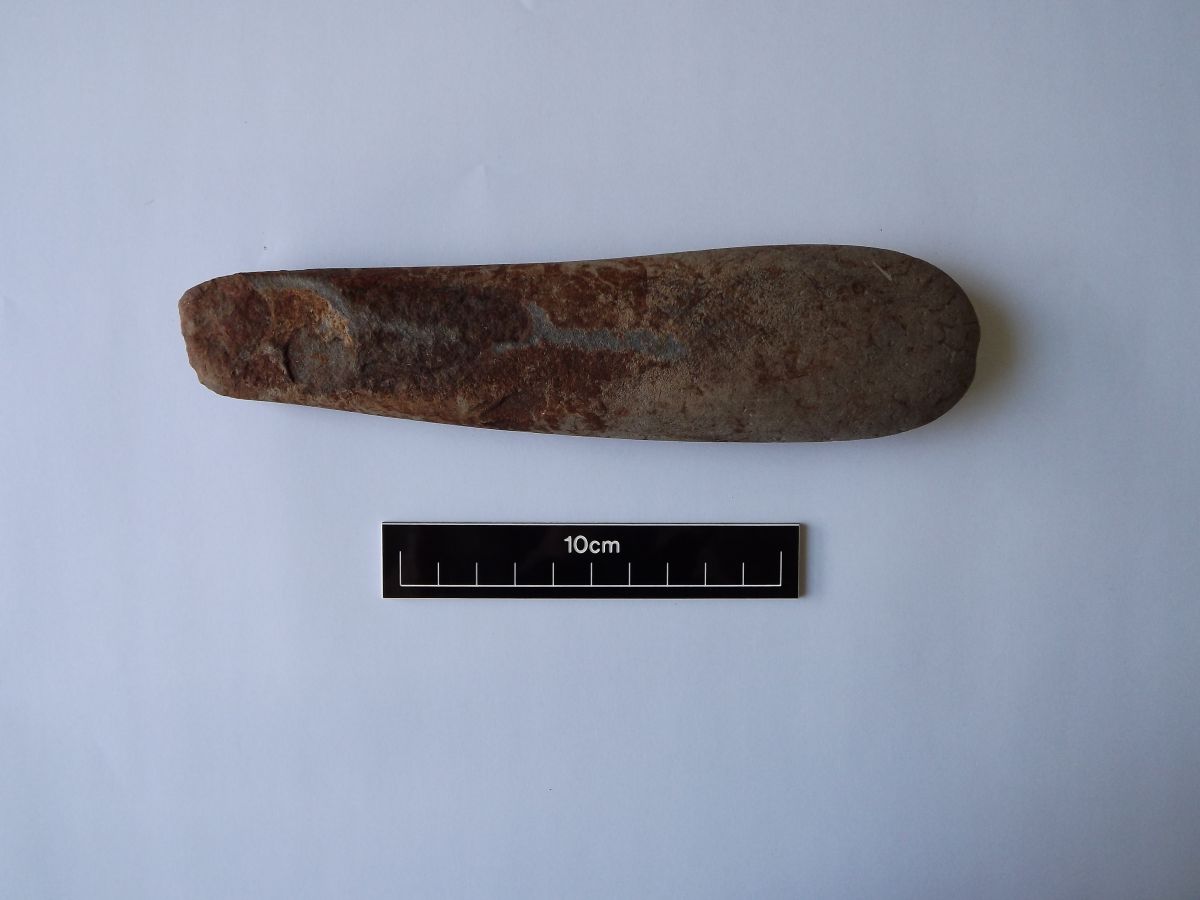Peat has developed on the moors of South West Britain over millennia - the wet and exposed moors being conducive environments for peat formation. However, it is strongly suspected that human activity in the uplands also contributed to the breakdown of the thin soils that proceeded the peat and contributed to its spread. In the nineteenth and twentieth centuries the peat has been heavily damaged by erosion and drainage.
 Efforts to restore the condition of the peat within Exmoor National Park have been ongoing for many years. Since 2011, the Exmoor Mires Partnership, funded by South West Water, Natural England and the Environment Agency has taken on this task. Other partners include Exmoor National Park Authority, Historic England, the University of Exeter, the Exmoor Society and Exmoor landowners. This is achieved through the blocking of drainage ditches, peat cuttings and other erosions features, allowing the peat to retain water for longer, promoting wetter conditions and peat growth and increasing biodiversity. Dartmoor National Park has carried out similar work in recent years and since early 2018 a successful DEFRA funding bid has allowed the Exmoor Partnership to take up this work on Dartmoor and Bodmin Moor.
Efforts to restore the condition of the peat within Exmoor National Park have been ongoing for many years. Since 2011, the Exmoor Mires Partnership, funded by South West Water, Natural England and the Environment Agency has taken on this task. Other partners include Exmoor National Park Authority, Historic England, the University of Exeter, the Exmoor Society and Exmoor landowners. This is achieved through the blocking of drainage ditches, peat cuttings and other erosions features, allowing the peat to retain water for longer, promoting wetter conditions and peat growth and increasing biodiversity. Dartmoor National Park has carried out similar work in recent years and since early 2018 a successful DEFRA funding bid has allowed the Exmoor Partnership to take up this work on Dartmoor and Bodmin Moor.
The absence of intensive agriculture on the uplands of the South West has ensured that they are archaeologically rich with artefacts, sites and even landscapes being preserved under, within and around the peat. It was recognised that the groundworks and vehicle movements associated with mires restoration had the potential to damage these features. Therefore, the project team includes a Historic Environment Officer, whose role is not only to provide advice and undertake work aimed at reducing any threats to valuable archaeology, but also to devise and coordinate a programme of research on aspects of Exmoor’s moorland archaeology most likely to be affected by restoration. This research is central to the holistic approach taken to mires work in the South West – ensuring the curation and management of the peatland resource through developing an understanding of its history.
This work has employed a variety of techniques. These start with walkover survey, aimed at spotting and recording previously unknown archaeological features. It is not unusual to double the number of known archaeological sites in a given area. Discoveries have included prehistoric cairns and standing stones, medieval trackways, and the remains of post-medieval mineral extraction. Restoration plans can then be developed that ensure no damage is caused to the historic environment. It is not unusual, where features are threatened by erosion, that mires work can enhance their survival.
The other thread of the historic environment officer’s role – researching the history of the peatlands – has used a range of sophisticated methods such as geophysical investigation, palaeo-ecological analysis and high-resolution photographic-drone survey. So far, this has yielded a wealth of new information on topics as diverse as Mesolithic hunter gatherers, Bronze Age farming landscapes, medieval routeways, Victorian agricultural improvement and 19th- and 20th-century peat cutting. The communication of this enhanced understanding of our heritage – to both public and professional audiences – is central to promoting peatland restoration in the South West.
 Examination of the palaeo-environmental record preserved within the peat – a wide range of evidence including plant remains, pollen, fungal spores and charcoal – demonstrates one of the fundamental services it provides. Nowhere else can we find such a complete record of the interaction between our environment, human activity and climate change. This archive is lost as the peat dries out, and with it our opportunity to understand the processes which we are attempting to manage.
Examination of the palaeo-environmental record preserved within the peat – a wide range of evidence including plant remains, pollen, fungal spores and charcoal – demonstrates one of the fundamental services it provides. Nowhere else can we find such a complete record of the interaction between our environment, human activity and climate change. This archive is lost as the peat dries out, and with it our opportunity to understand the processes which we are attempting to manage.
Images:
Top left: UAV Survey: Commissioned in advance of mires restoration on Exmoor, this high-resolution survey was carried out using an unmanned aerial vehicle. It shows a Bronze-Age barrow (lower centre), turf-cutting pits (right and top left) and post-medieval cultivation (bottom left). The latter was a previously unrecognised example of a very rare activity – the area was within a royal forest at the time where agriculture was highly restricted. © Exmoor Mires Partnership
Middle: Turf Steading: The exploitation of peat as domestic fuel continued on the moors of the South West until the latter half of the twentieth century but memory of this element of local culture is in danger of being lost. Steadings are the remains of platforms where turfs were stored within a ditch to encourage drainage. This example was noted in advance of mires work on Bodmin Moor; despite lying about 100m from a main road it had not been recorded previously.© Exmoor Mires Partnership
Bottom left: Hammer Stone: This tool had been lost or discarded on Exmoor by a prehistoric hunter-gatherer in the Mesolithic (10,000-4,000BC). It was recovered by the historic environment officer during mires restoration works and is the first of its kind found on the moor.© Exmoor Mires Partnership
Dr Martin Gillard, South West Peatland Partnership, mgillard@exmoor-nationalpark.gov.uk









